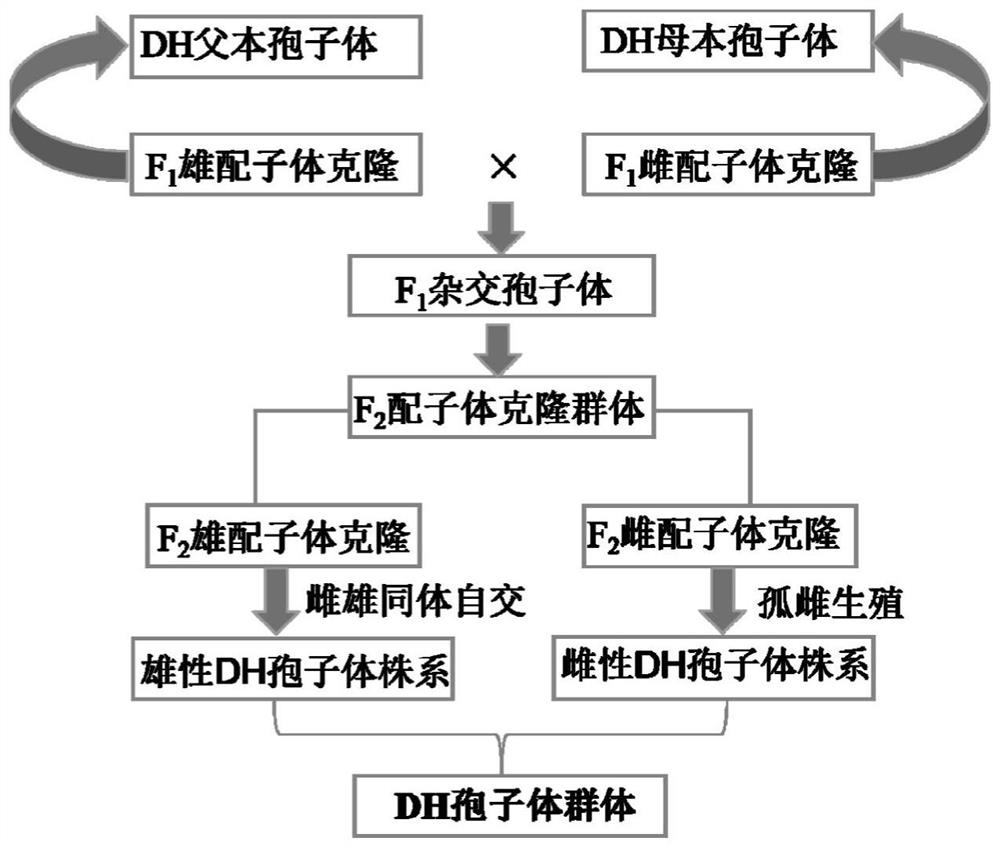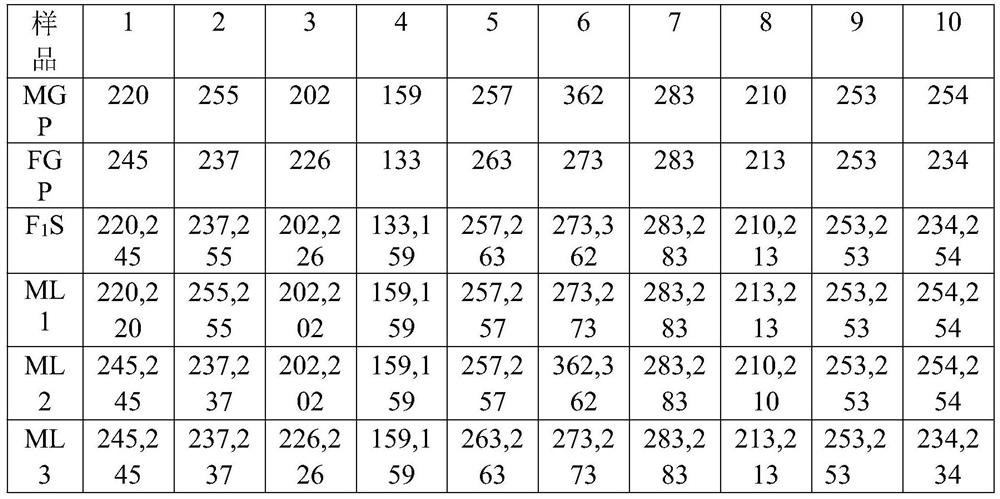A method of constructing double haploid (dh) sporophyte populations in Wakame
A sporophyte and wakame technology, applied in the field of genetic breeding, can solve the problems that have not yet been reported on DH populations
- Summary
- Abstract
- Description
- Claims
- Application Information
AI Technical Summary
Problems solved by technology
Method used
Image
Examples
Embodiment 1
[0040] like figure 1 shown, select F for parthenogenesis 1 Cloning of female gametophytes and F that can produce hermaphroditism 1 Male gametophyte clones, the genetic relationship analysis of the 10 SSR loci of the selected gametophyte clones showed that the female and male gametophyte clones had different alleles (80% degree of difference) at 8 loci, indicating that the two The genotypes have obvious differences and are suitable as parents for group construction. The female and male gametophyte clones were mixed in a mass ratio of 1:1, and then hybridized to obtain F. 1 Hybrid sporophyte; the hybridization process is the mixing of female and male gametophyte clones in PES seawater medium at a temperature of 18 °C and a light intensity of 50 μmol photons m -2 s -1 , photoperiod 12h day: 12h night; and cultured for 30 days under the condition of changing the medium every 3 days, the resulting F 1 When the sporophyte reaches more than 1mm, it is transferred to a 2L beaker,...
PUM
 Login to View More
Login to View More Abstract
Description
Claims
Application Information
 Login to View More
Login to View More - R&D
- Intellectual Property
- Life Sciences
- Materials
- Tech Scout
- Unparalleled Data Quality
- Higher Quality Content
- 60% Fewer Hallucinations
Browse by: Latest US Patents, China's latest patents, Technical Efficacy Thesaurus, Application Domain, Technology Topic, Popular Technical Reports.
© 2025 PatSnap. All rights reserved.Legal|Privacy policy|Modern Slavery Act Transparency Statement|Sitemap|About US| Contact US: help@patsnap.com



